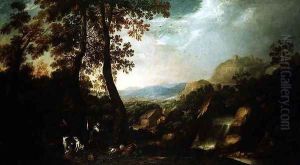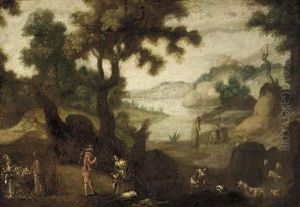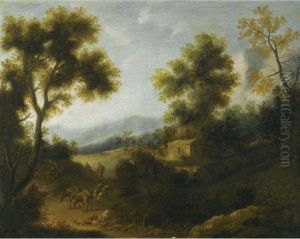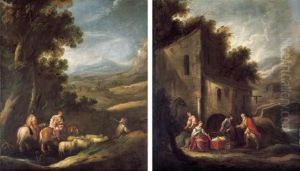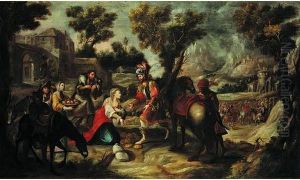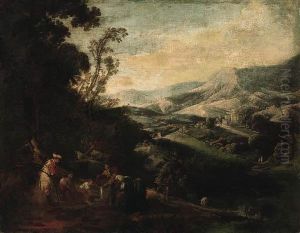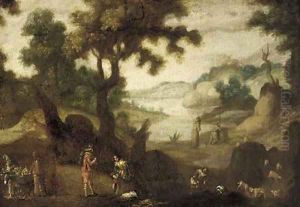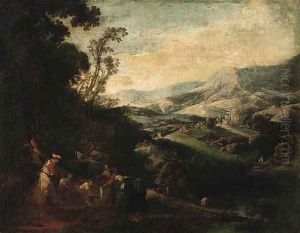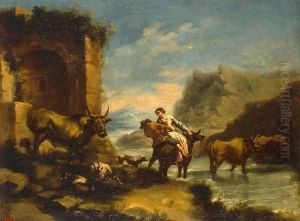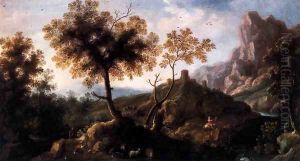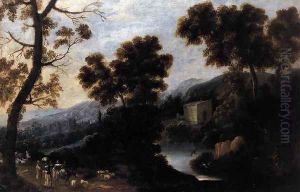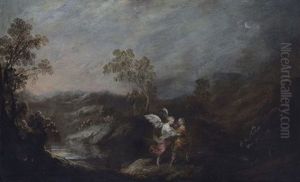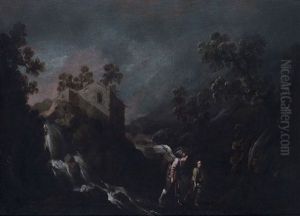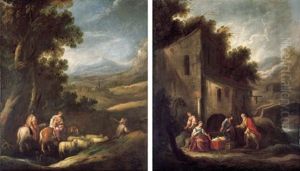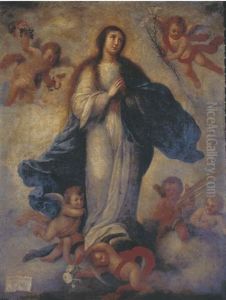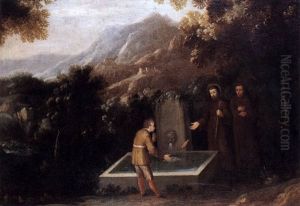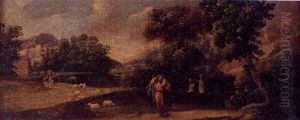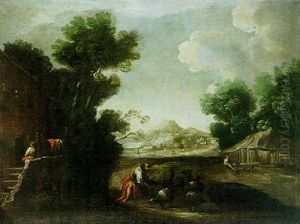Ignacio de Iriarte Paintings
Ignacio de Iriarte, born in Azcoitia, Spain, in 1620, was a distinguished figure in the world of Baroque landscape painting. His contributions to art are recognized for their serene and detailed depiction of nature, setting him apart from his contemporaries in the 17th century. Iriarte's early life is somewhat shrouded in mystery, and little is known about his initial training. However, it is believed that he began his artistic journey in Seville, a vibrant center for artists during the Golden Age of Spain.
In Seville, Iriarte was initially influenced by the works of Flemish landscape artists, whose works were accessible in the city. Over time, he developed his unique style, characterized by meticulous attention to detail and a profound appreciation for the tranquil aspects of nature. Unlike many of his contemporaries who focused on dramatic and religious themes, Iriarte's landscapes are marked by a peaceful coexistence of natural and man-made elements, reflecting his deep observation and love for the natural world.
Iriarte's landscapes often feature classical ruins or pastoral scenes, populated with small figures that highlight the grandeur of nature over human achievements. His technique involved a delicate balance of light and shadow, which added depth and realism to his scenes. This approach not only endeared him to his patrons but also influenced the development of landscape painting in Spain and beyond.
Despite the beauty and technical skill evident in his work, Ignacio de Iriarte did not gain the same level of fame as some of his contemporaries during his lifetime. However, his contributions have been increasingly recognized and appreciated in the centuries following his death in 1685, in Seville. Today, Iriarte is celebrated as a pioneer in the landscape genre, a testament to his ability to capture the serene beauty of nature in a way that was ahead of his time. His works remain an important part of Spanish art history, offering insight into the evolution of landscape painting in the Baroque era.
